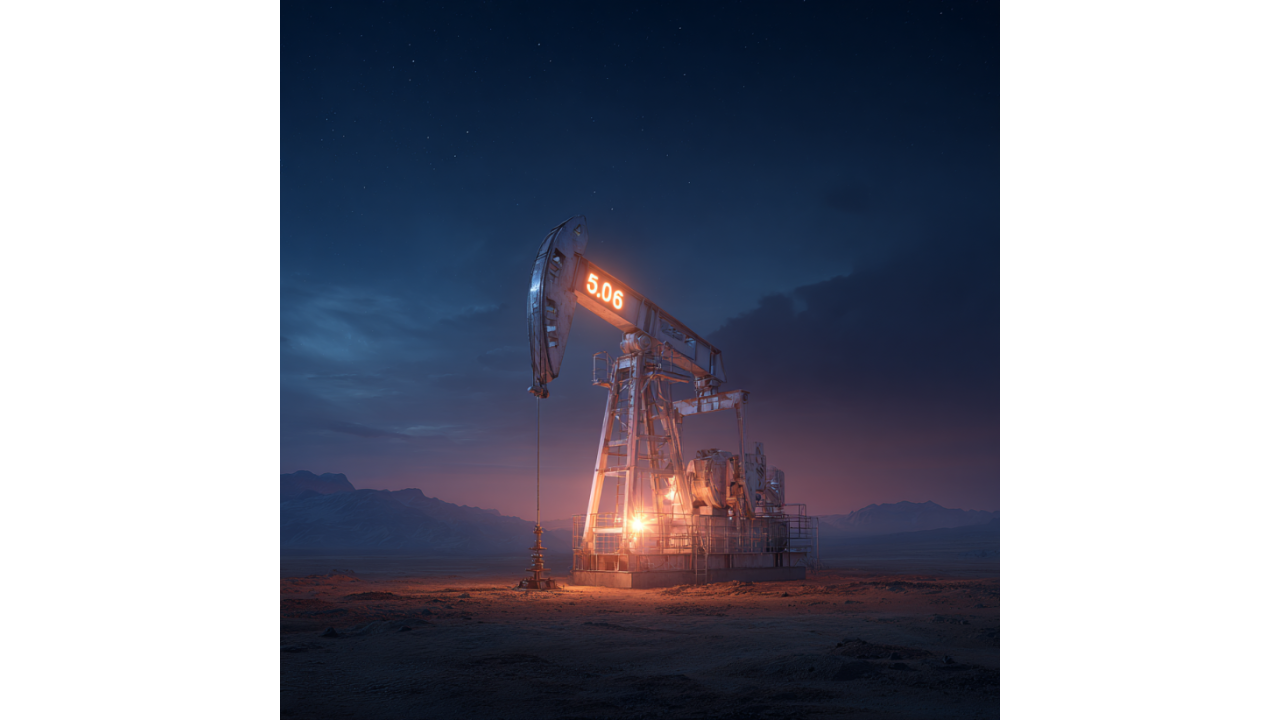OpenAI Just Told the White House That Electricity Is the New Oil
OpenAI didn't send the White House a polite memo. They sent a formal pitch with a thesis so blunt it belongs on a protest sign: electricity is the...

Everyone's panicking about AI's energy consumption, but they're missing the plot entirely. OpenAI just announced a $1 billion AI facility in Norway that will run 100,000 NVIDIA GPUs on 100% renewable energy—and it's not just a feel-good story. It's proof that AI's massive power appetite is about to become the renewable energy sector's best friend.
This isn't some distant future scenario. Stargate Norway, launching in Narvik by 2026, represents the first major European AI "gigafactory" powered entirely by clean energy. While critics wring their hands about AI consuming as much electricity as entire countries, the smart money is betting that this demand will drive the largest renewable energy buildout in human history.
Here's what everyone gets wrong about AI's energy consumption: it's not a bug, it's a feature. The IEA projects that electricity demand from data centers worldwide is set to more than double by 2030 to around 945 terawatt-hours, with AI-specific servers projected to more than quadruple by 2030. In the US alone, data centers used somewhere around 200 terawatt-hours of electricity in 2024, roughly what it takes to power Thailand for a year.
That sounds terrifying until you realize what it actually means: AI is creating the world's most concentrated, predictable, and profitable demand for clean energy. In the United States, power consumption by data centers is on course to account for almost half of the growth in electricity demand between now and 2030. The US economy will soon consume more electricity for processing data than for manufacturing all energy-intensive goods combined, including aluminum.
This isn't distributed residential demand that utilities struggle to predict and serve profitably. This is massive, 24/7, industrial-scale consumption that can anchor renewable energy projects at scales previously impossible.
Stargate Norway
isn't just another data center—it's a blueprint for the future. The facility will deliver 230MW of capacity with ambitions to expand by an additional 290MW, positioning it among the most significant AI infrastructure investments in Europe. But here's the kicker: the facility will run entirely on renewable power and incorporate closed-loop, direct-to-chip liquid cooling to ensure maximum cooling efficiency, with excess heat from the GPU systems made available to support low-carbon enterprises in the region.
Narvik's abundant hydropower, low local electricity demand, and limited transmission capacity result in power prices well below the European average, complemented by a cool climate and established industrial infrastructure. As Aker CEO Øyvind Eriksen put it, "Norway has a proud history of turning clean, renewable energy into industrial value, powering global industries like aluminium and fertiliser. Today, artificial intelligence and advanced data operations represent the next wave of value creation".
This is industrial-scale renewable energy deployment with guaranteed demand. No subsidies needed. No political battles. Just profitable, clean power at massive scale.
Here's where it gets beautiful: AI's power demands are so massive and concentrated that they're creating economic incentives for renewable deployment that dwarf any climate policy. Goldman Sachs Research estimates US utilities will need to invest around $50 billion in new generation capacity just to support data centers alone. In Europe, analysts expect nearly €850 billion in investment on solar, onshore wind, and offshore wind energy over the coming decade.
Individual data center campuses could soon demand a gigawatt or more of power — one billion watts — or about twice the residential electricity consumption of the Pittsburgh area. But unlike residential demand, this consumption is predictable, profitable, and concentrated. A data center campus with peak demand of one gigawatt is roughly equivalent to the average annual consumption of about 700,000 homes, but it's all in one location with a single customer willing to pay premium rates for reliable, clean power.
Companies like Meta, Amazon, and Google have joined a pledge to triple the world's nuclear capacity by 2050, while simultaneously driving unprecedented investment in solar and wind. This isn't virtue signaling—it's economic necessity. AI companies need reliable, cost-effective power at massive scale, and renewables are increasingly the only option that can deliver both.
Goldman Sachs Research estimates a data center pipeline for Europe amounting to about 170 GW, equivalent to about one-third of the region's power consumption. This isn't distributed solar panels on suburban rooftops—this is industrial-scale clean energy infrastructure that can anchor entire regional economies.
Projects like Stargate Norway show how this works in practice. Rather than fighting for subsidies or battling NIMBYism, AI companies are writing billion-dollar checks for facilities that will consume massive amounts of clean power for decades. They're creating the demand certainty that renewable energy developers need to build at scale.
The companies said the data center will run entirely on renewable power and have 230 megawatts of capacity, making it one of the biggest in Europe. This single facility will drive more renewable energy deployment than most national climate policies.
The AI buildout timeline is compressing everything. Despite advancements in AI energy efficiency, the overall energy consumption is expected to rise due to the substantial increase in usage, with AI-related servers growing from 2 TWh in 2017 to 40 TWh in 2023. Electricity consumption in accelerated servers, which is mainly driven by AI adoption, is projected to grow by 30% annually.
This isn't a gradual transition happening over decades. This is a massive infrastructure buildout happening right now, driven by companies with essentially unlimited budgets and urgent timelines. When Sam Altman says "Europe needs more compute to realize the full potential of AI for all Europeans", he's talking about deploying infrastructure that will require unprecedented amounts of clean energy within the next few years.
AI's energy consumption
isn't the climate crisis—it's the solution accelerator. By creating massive, concentrated, profitable demand for clean power, AI is driving renewable energy deployment at speeds and scales that climate policies could never achieve.
Stargate Norway is just the beginning. As AI companies race to build compute capacity, they're inadvertently building the clean energy infrastructure that will power the next century. The climate movement just found its unlikely ally, and it's got deeper pockets than any government program.
The real question isn't whether AI will consume massive amounts of energy—it's whether we're smart enough to harness that demand to build the clean energy system we desperately need.
Ready to ride the AI-driven clean tech wave? Winsome Marketing's growth experts help forward-thinking companies navigate the intersection of AI and renewable energy, identifying opportunities where massive technological shifts create unprecedented market dynamics. Let's build the future together.

OpenAI didn't send the White House a polite memo. They sent a formal pitch with a thesis so blunt it belongs on a protest sign: electricity is the...
-3.png)
Let's talk about the most expensive math homework mistake in tech history.

OpenAI just solved the biggest problem in education, and most people haven't even noticed yet. Study Mode launched this week, turning ChatGPT from a...